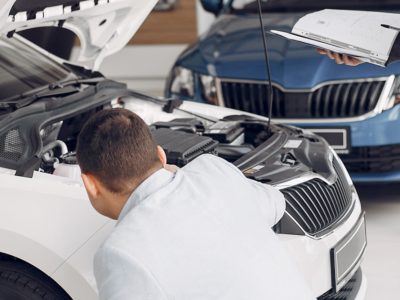Emergency Car Repair: How To Handle the Financial Stress

Dealing with emergency car repair can quickly turn into a significant source of financial stress, especially when they come unexpectedly. When you suddenly need to pay for car repairs, it can disrupt even the most careful budgeting.
Thereby, leaving many car owners scrambling to find a way to cover costs without falling into debt. Whether it’s a blown gasket, a malfunctioning transmission, or any other urgent fix. The key is not just finding the funds but doing so in a way that doesn’t jeopardize your financial well-being.
The following article focuses on the various options available for handling the expense. From considering different types of loans to breaking the savings, a few options can help you out.
Understanding the Cost of Emergency Car Repair

Emergency car repair can vary widely in cost, depending on the nature of the problem and the type of vehicle you own. The bill can range from a few hundred to several thousand dollars, from a simple tire change to more complex issues like engine or transmission repairs.
Factors influencing the cost include the parts required, labor rates at the repair shop, and whether your car is a standard model with readily available parts or a luxury vehicle that needs specialized attention. It’s this unpredictability that makes preparing for such expenses challenging.
When you understand the options, you can make an informed decision. You can make better financial decisions that do not throw your finances off track. In addition, it is also an excellent way for you to handle the financial stress that comes with emergency repairs.
When you keep your finances on track, you are equipped to make better decisions as you are calm.
Moreover, it ensures that this temporary setback does not affect your long-term goals. Recognizing the potential financial impact of these repairs is the first step toward managing them effectively.
By understanding that costs can escalate quickly, car owners can better assess their options to pay for car repair, ensuring they choose a solution that aligns with their financial situation and minimizes additional stress.
Assessing Your Financial Options
When faced with emergency car repair, evaluating your financial options is crucial to deciding to best suit your current situation. Start by examining your savings; if you have an emergency fund, now might be the time to use it.
This option is usually the most straightforward and cost-effective, as it doesn’t involve new debt. However, not everyone has enough savings to cover unexpected repair costs. In this case, it’s essential to look at other avenues.
Consider the types of loans available, such as personal loans, which offer a lump sum with fixed interest rates, or payday loans for more minor, instant cash needs. Each has advantages and limitations, especially concerning interest rates and repayment terms. Additionally, some might explore using a credit card, which can offer quick access to funds and possibly rewards, though high APRs can add to the cost if the balance isn’t paid off quickly.
It’s also worth getting started on seeking out quick fund options like selling unused items or picking up extra work if the repair isn’t immediately urgent.
Assessing these options involves balancing the need for quick access to cash with the long-term financial implications of your choice, ensuring you can manage the repayment without undue stress.
Types of Loans and Financing Options

Navigating the landscape of loans and financing options for emergency car repair requires carefully considering what’s available and what fits your financial scenario best.
Here are some standard solutions:
- Personal Loans: These are unsecured loans provided by banks, credit unions, and online lenders. They offer the flexibility of using the funds for any purpose, including car repair. Personal loans come with fixed interest rates and a set repayment period, making budgeting for repayment straightforward. The interest rate and loan terms can vary based on your credit score.
- Credit Cards: For those with a good credit line, credit cards can quickly cover repair costs. Some cards offer interest-free periods, rewards, or cashback, but it’s vital to pay off the balance soon to avoid high-interest charges.
- Payday Loans: These loans offer short-term financial relief with high-interest rates, catering to urgent cash requirements. They can swiftly supply funds, frequently without necessitating a credit check. However, steep charges and brief repayment intervals could result in a debt spiral unless handled cautiously.
- Auto Repair Financing: Some auto repair shops offer financing plans through their own programs or third-party lenders. These can be convenient, sometimes offering deferred interest promotions, but it’s essential to understand the terms fully to avoid unexpected costs.
- Title Loans: Using your vehicle’s title as collateral, these loans provide access to funds quickly but can be risky. High-interest rates and the potential to lose your car if you can’t repay make this option less favorable.
Choosing the right financing option involves weighing the costs, terms, and potential impact on your financial future. It’s crucial to consider the immediate need for repairs and how repayment will fit into your overall financial plan.
Strategies to Avoid Debt

When facing the necessity to pay for car repair, the goal is to manage the situation without falling deeper into financial trouble. Here are strategies to help avoid accumulating debt:
- Borrow Only What You Need: Securing a larger loan for extra cushioning can be tempting, but this can lead to unnecessary debt. Estimate the repair costs accurately and borrow just enough to cover these expenses.
- Choose Low-Interest Options: Compare different financing options and lean towards those with the lowest interest rates. Personal loans from credit unions or banks often offer more reasonable rates compared to credit cards or payday loans.
- Negotiate Payment Plans: Some repair shops may allow you to negotiate a payment plan directly. This can spread out the cost over time without the high-interest rates associated with some loans.
- Utilize Emergency Funds: If you have an emergency savings account, consider using it. It’s precisely what it’s there for and the cheapest way to cover unexpected expenses without accruing debt.
- Plan for Repayment: Before taking on any loan, clearly plan how you’ll repay it. Adjust your budget to accommodate the additional monthly payments, ensuring it doesn’t disrupt your ability to meet other financial obligations.
By carefully considering your borrowing needs, exploring lower-interest options, and planning for repayment, you can manage the cost of car repairs without jeopardizing your financial health.
Building a Safety Net for Future Emergencies

Creating a financial safety net is essential for weathering unexpected car repair and other emergencies without falling into debt. Here are steps to build that cushion:
- Start Small: Set aside a small portion of your monthly income into an emergency fund. Even a modest amount can grow over time, providing a significant buffer against future financial shocks.
- Automate Savings: Set up an automatic transfer from your checking account to a savings account dedicated to emergencies. Automating the process ensures you consistently save without thinking about it each month.
- Cut Unnecessary Expenses: Review your monthly spending and identify areas where you can cut back. Redirecting even a small portion of your discretionary spending to your emergency fund can significantly impact over time.
- Increase Your Income: If possible, look for ways to increase your income through side gigs, overtime, or even selling items you no longer need. Extra income can boost your emergency fund more quickly.
- Regular Maintenance: Invest in regular vehicle maintenance to avoid sudden, costly car repairs. Preventative care can help identify potential issues before they become significant problems, reducing the need for emergency repairs.
By building and maintaining a safety net, you can ensure that you’re prepared to handle unexpected expenses. This removes your option to resort to high-interest loans or credit cards.
Thus, protecting your financial stability.
Conclusion
Read Also:
























